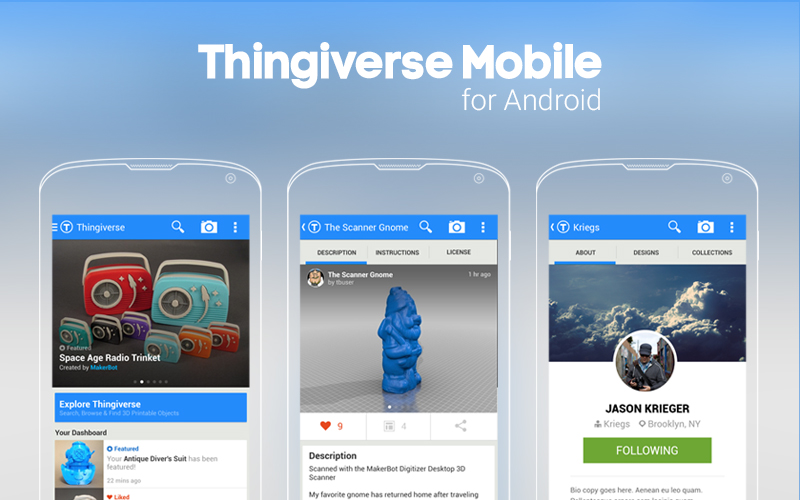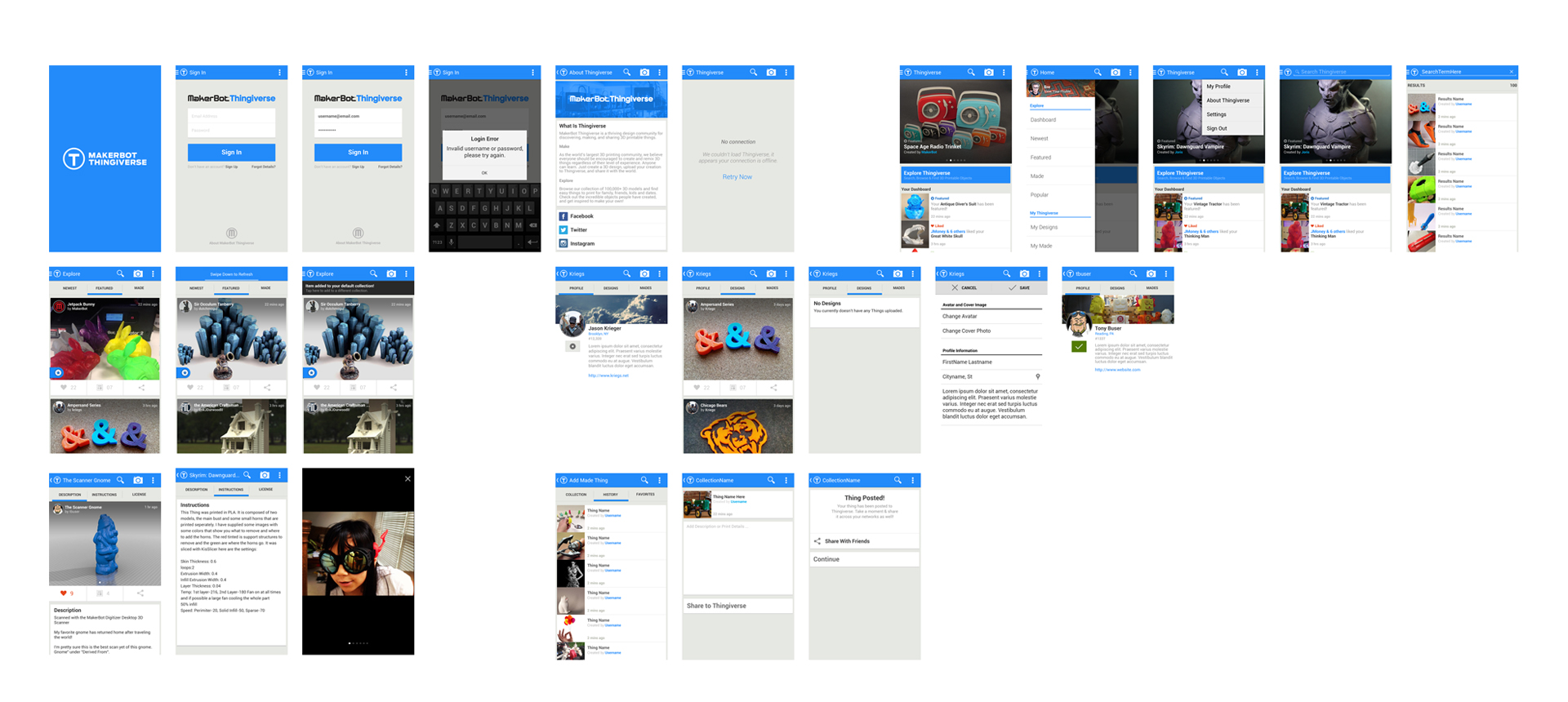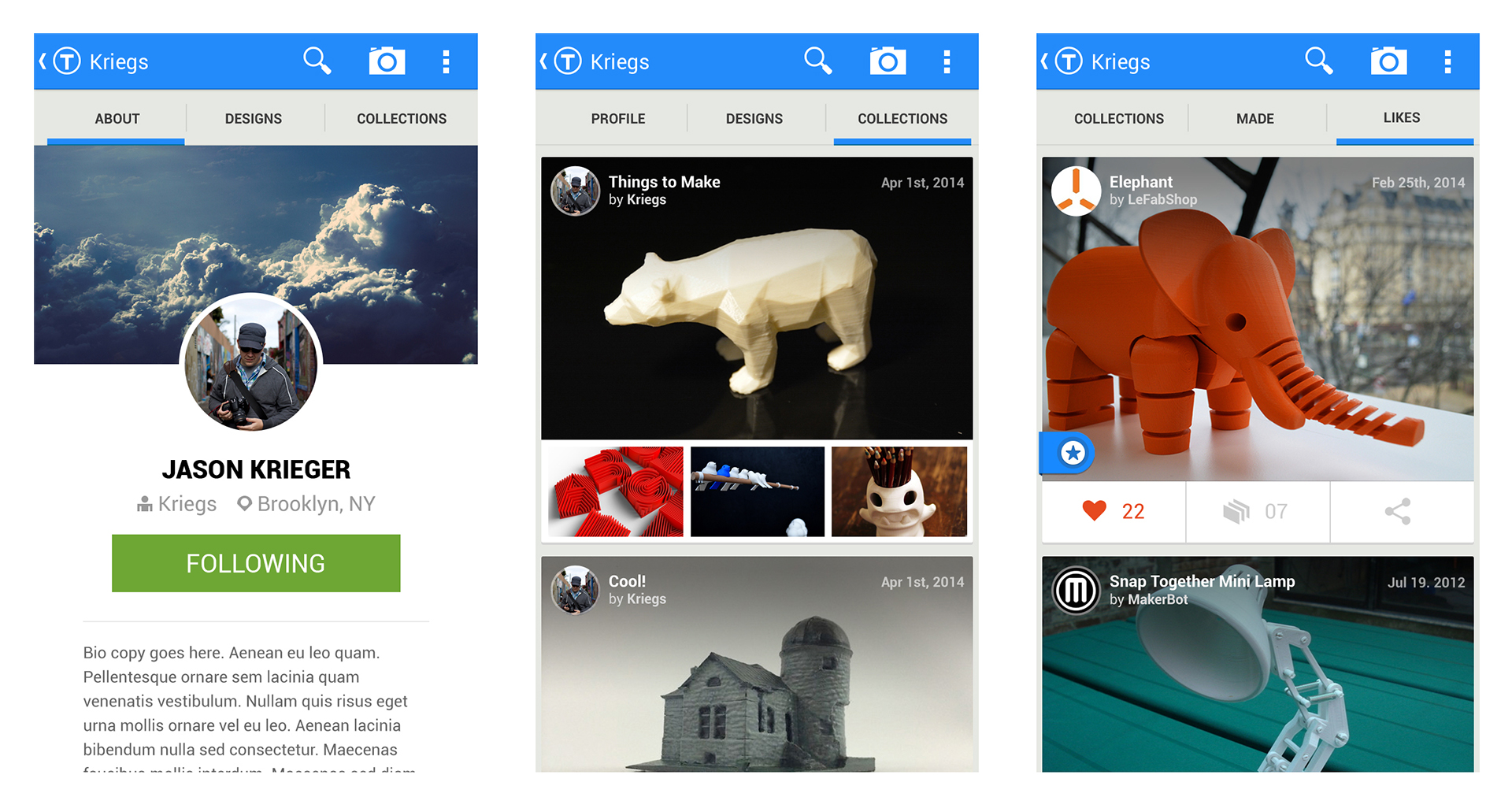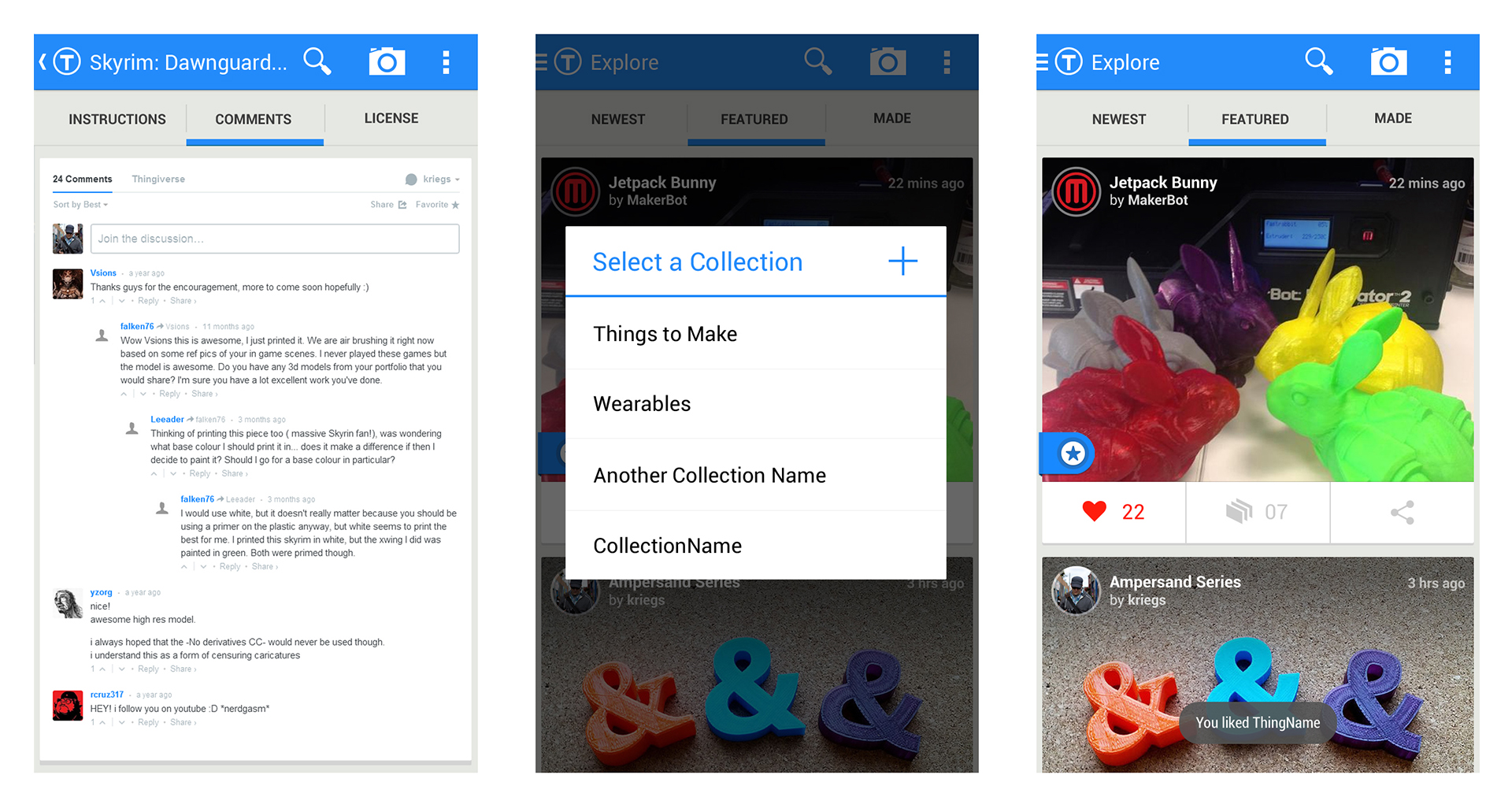MakerBot’s Thingiverse is an online design community for discovering, making, and sharing 3D printable things that was launched in 2008 (predating MakerBot itself). As of Summer 2016, the site featured more than 2 million user-submitted 3D printable files, more than a million registered users, and about 2 million daily users.
My Role
By the time I worked on this app, I had been promoted to Senior UI/UX designer. I worked alongside a Project Manager and an outsourced team of developers on this project.
Project Overview
Shortly after launching the redesign of the Thingiverse website, we launched an iPhone companion app (designed and developed by a third-party studio). There was a lot of excitement from the leadership team to say the company was in the Apple App Store.
But looking at the analytics of Thingiverse users on the web, I saw a growing number of Android users visiting the site that actually exceeded users on iPhones. Creating a companion app for them would be a logical next step. Using those data points, I pitched the idea of making an Android version to the Head of Digital Products, and he agreed. I worked closely with the Thingiverse Project Manager and an outsourced pair of Android developers to make this happen. Weekly in-person meetings for the group were held at the MakerBot offices, and I worked closely with the developers, chatting daily via Google Hangouts, pushing the latest design assets to Github, and pulling the nightlies to test both from a functionality point of view and for UI/UX reviews.
Research
Because Thingivserse already had an iPhone app, I had a general blueprint to work from. I wanted the experience to be similar but designed for Android users, with interactions they would expect. Our focus was on then-current Android 4.4 (KitKat) but maintained support back to Android 4.0 (Ice Cream Sandwich). Since this was my first Android app, I spent some time researching best practices for Android Apps around the 4.4 release and matched best I could to feel like a true and proper native app. The app would be designed and released before Material Design was announced
Along with the UI/UX components, I was also responsible for researching what else was needed to launch. This meant setting up a Google Play Developer account and maintaining our APK releases. I also set up a Google+ community internally for beta user testing. We would be able to push an APK to Google Play (under a beta tag) and only users in our community could test the app, which was downloadable straight from Google Play. This allowed us to get the beta app out quickly and easily (the user just had to update via Google Play) and leverage the Community page for feedback with each beta release.
Design
As the sole designer on this project (as well as Thingiverse), I already knew the style we had set out for the site (and future plans). Using this, I was able to better match the brand, with which the iPhone app didn’t really align (since it was designed and developed by a third party). I worked to follow common design practices for Android at the time: Pull-out main navigation, tabbed sub-navigation, use of the overflow menu (3 dots), in-line search in the navigation bar, etc. With MakerBot’s mantra of “Full Speed Ahead,” I didn’t have time to sketch as much as I wanted and decided to get started in Photoshop.
Release
We released the app to Google Play in January 2014. Our Android users were super excited to finally have an app. Since I had done the research and was most comfortable with the Google Play Developer Console, I was in charge of pushing the app to release and getting the Google Play listing optimized for release. In a short time, the number of users for the Android app had passed that of the iPhone app and maintained a 5-star rating for a number of months afterward.
Post-Release
Eventually we were able to bring on an internal junior developer to work on future adjustments. I was still the most versed with the Google Play Developer Console and still handled pushing out each version of the app after launch and maintaining our Google+ Community. With the later release of the MakerBot Mobile app for Android, we added functionality that allowed users to send Things from the Thingiverse App to the MakerBot Mobile app so the user could initiate a print from their phone. This allowed us to keep feature parity with the iPhone version (which had a version of Thingiverse built into it) and to also stay on budget and time.
Gathering some user feedback from an in-app feedback form or from Google Play reviews, I got to work on version 1.1, which featured:
Updates to the User Profile (above)
- Refreshed the About tab to better mimic the look of profiles on Thingiverse
- Added more content tabs for the users’ Collections and Liked Things
Redesigned “Made One” flow and “Thing” editing capabilities (above)
- When clicking the camera icon in the navigation, the user could now select the ability to change their user avatar or cover photo as well as posting Made Ones and adding photos to existing Things.
- The ability to select different sources, not just the camera. This allowed users to use existing photos already on their phone.
- The ability to scale and crop photos taken.
- The ability to edit a Thing and add multiple photos to it.
- The ability to change the cover image for a Thing
Other quality-of-life improvements (above)
- Being able to view comments on a Thing.
- An easier to use collection flow. Existing collections were listed with the + icon, allowing the user to create a new collection. The Collection icon itself was also changed to match changes on the website.
- Updated dialogs, using native Android variants.
Material Design
After Material Design was announced by Google, and after attending Google I/O in 2015, I was inspired to work on concepts for updating both the Thingiverse and MakerBot Mobile apps. I started to sketch out ways to benefit from the new design standard. Unfortunately, due to time and resource restrictions, I wasn’t able to explore these updates further.
Interested in more? Check out all my work for MakerBot Industries.





